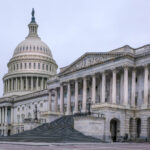Don’t Let Pandemic Fatigue Inhibit Pandemic Preparedness
Alex Brill | AEIdeas
Almost three years after COVID-19 changed the world, pandemic fatigue is in full swing. As of November 9, just 10 percent of Americans had received the latest vaccine booster despite ample supply, and a Pew Research Center poll earlier this year showed that Americans think the coronavirus outbreak is the least important of 12 problems facing the country.
While many would like to forget that COVID-19 ever happened, now is the time to begin preparing for the next pandemic. Research scientists at Duke University have estimated that there may be a greater than 70 percent chance of a COVID-19-like pandemic occurring in a lifetime. In other words, pandemics are a recurring threat, and one will likely materialize for our children or grandchildren.
A recent White House National Security Memorandum rightly acknowledges the critical importance of preserving “our health, economic, social, and national security by protecting the Nation from biological threats and promoting pandemic preparedness and global health security.” How to achieve and effectively finance these goals remains a complex challenge.
Experts pushing for pandemic preparedness are calling for more global surveillance of emerging disease risks, more stockpiling of critical supplies, and more investment in research and development of vaccines and antivirals. All are sensible objectives.
A recent research paper authored by economists Rachel Glennerster (University of Chicago), Christopher M. Snyder (Dartmouth College), and Brandon Joel Tan (IMF) makes the case empirically for large-scale investment in vaccine manufacturing capacity. They write:
Investing now in building the capacity to rapidly vaccinate a large percentage of the population against a new virus could dramatically reduce the cost of future pandemics. . . . Specifically, we show that $60 billion in upfront investment and $5 billion in annual expenditure would be sufficient to fund capacity to produce 24 billion vaccine courses per year and thus vaccinate 70% of the world’s population in six months in a pandemic. . . . [But] instead of more being built, capacity for mRNA vaccines built up during the COVID-19 pandemic is in the process of being converted to other uses.
Allowing this capacity to be dismantled or diverted suggests that we are failing to learn the lesson of COVID-19. Importantly, this research evaluates the benefit of pre-funding manufacturing capacity compared to a realistic alternative—a mobilization effort that produces the same number of vaccines in 18 months—not compared to a world without any timely vaccine.
Who should finance a significant investment in vaccine capacity? As Glennerster and coauthors point out, private investors do not, on their own, want to bear the cost of building a factory today for a vaccine that may not be needed for decades, even if it has the potential for considerable social benefit. Rather, it makes sense for government to fund or otherwise encourage this capacity. Evidence of large positive social externalities is a classic justification for government intervention. Still, many details about the mechanics of a program to cost-effectively ensure necessary future capacity would need to be resolved, as would the best way to effectively achieve complementary preparedness objectives.
Bottom line: While the American public may want to put COVID-19 behind them, lawmakers should recognize the real risk of another pandemic and invest wisely to prepare for it.
Read here. Brill’s article was also featured on the Washington Examiner.












